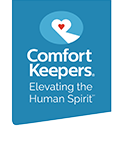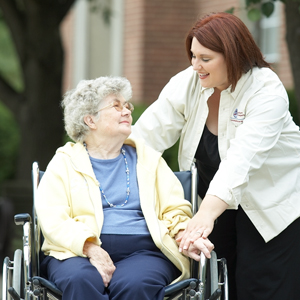Types of Heart Attacks, Related Conditions – and Warning Signs
Blog | March 2, 2017
How Heart Attacks Happen
Your heart muscle needs oxygen to survive. A heart attack occurs when the blood flow that brings oxygen to the heart muscle is severely reduced or completely cut off. This happens because coronary arteries supplying the heart muscle with blood flow can gradually become narrow from a buildup of fat, cholesterol, and other substances that together are called plaque.
This slow process is known as atherosclerosis. When a plaque in a heart artery breaks, a blood clot forms around the plaque. This blood clot can block the blood flow through the heart muscle. When the heart muscle is starved for oxygen and nutrients, it is called ischemia. When damage or death of part of the heart muscle occurs as a
result of ischemia, it is called a heart attack or myocardial infarction (MI).
Various Types of Heart Attacks and Related Events
STEMI Heart Attacks: STEMI heart attacks are the deadliest type of heart attacks. STEMI is short for ST-segment elevation myocardial infarction. Sometimes called a massive heart attack or a widowmaker heart attack, a STEMI heart attack happens when a coronary artery is completely blocked. As a result, a large portion of the heart cannot receive blood, and the heart muscle quickly begins to die. Treatment options include angioplasty and stenting; clot-busting medication; and coronary artery bypass graft surgery (CABG).
NSTEMI Heart Attacks: NSTEMI stands for non-ST segment elevation myocardial infarction. NSTEMI heart attacks happen when blood flow to the heart through a coronary artery is severely restricted but not entirely blocked. An NSTEMI heart attack, often referred to as a mini or mild heart attack, usually causes less damage to the heart. It is likely that any coronary artery blockages are partial or temporary, and damage usually doesn’t go through the entire heart muscle. Also, they are caused by different types of blood clots than STEMI heart attacks, with differing amounts of clotting proteins and platelet blood cells. Therefore, the treatment of NSTEMI heart attacks differs from the treatment of STEMI heart attacks. Clot-busting medications, for example, are not effective, and although PCI may be part of the treatment, opening the artery within 90 minutes is not a primary goal.
Demand Ischemia: Demand ischemia is another type of heart attack where blockages in the arteries may not be present. It happens when a patient’s heart needs more oxygen than is available in the body’s supply. It may occur in patients with infection, anemia, or abnormally fast heart rates. It also may be triggered by exercise or emotion. It is characterized by angina because of the increased oxygen demand. Blood tests will show the presence of enzymes that indicate damage to the heart muscle.
Silent Heart Attacks: A heart attack does not always have obvious symptoms. In fact, a heart attack can actually happen without a person knowing it, and are often referred to as silent heart attacks. Though they come with no symptoms, silent heart attacks are not harmless. They can cause permanent damage to the heart muscle.
Coronary Artery Spasm: A coronary artery spasm is when the artery wall tightens and blood flow through the artery is restricted, potentially leading to chest pain, or blood flow is cut off completely, causing a heart attack. Coronary artery spasm comes and goes. Because there may not be a build-up of plaque or a blood clot in the artery, a coronary artery spasm may not be discovered by an imaging test called an angiogram that is typically performed to check arteries for blockages. Treatment for a coronary artery spasm consists of medications such as nitrates and calcium channel blockers.
Cardiac Arrest: Cardiac arrest is not a heart attack. With cardiac arrest, a person’s heart stops beating. It can be due to a heart attack, but can also occur as a primary event. Cardiac arrest can occur for other reasons besides a blockage in the artery, including electrolyte disturbances, such as low or high potassium or low magnesium, congenital abnormalities, or poor pumping function of the heart. In a heart attack, the heart keeps beating, but can cause life-threatening arrhythmias that result in cardiac arrest within a few minutes, because the heart is not pumping blood to the lungs to pick up vital oxygen that circulates back to the heart and to the body.
Initial treatment will consist of cardiopulmonary resuscitation (CPR) and defibrillation – delivery of an electrical shock to restore the heart’s rhythm. For people who are resuscitated and have a heartbeat, yet are unconscious, hypothermia protocols can be used, where the body is cooled for 24 hours, then gradually warmed. This has been shown to improve the odds of a good neurological outcome.
Seconds count in treating both heart attack and cardiac arrest. Cardiac arrest is especially critical, as the odds of survival go down by about 10 percent for every minute until the person is resuscitated. After 10 minutes the risk of permanent brain injury is very high.
Heart Attack Symptoms to Watch For
Heart attack symptoms vary widely. One can experience minor chest discomfort, or excruciating pain. The classic symptoms of heart attack include a feeling of extreme pressure on the chest and chest pain, including a squeezing or full sensation. This can be accompanied by pain in one or both arms, jaw, back, stomach, or neck. Other symptoms include shortness of breath, nausea, vomiting, lightheadedness, and breaking out in a cold sweat. Women are somewhat more likely than men to experience more of the other symptoms, such as lightheadedness, nausea, extreme fatigue, fainting, dizziness, or pressure in the upper back. One thing applies to everyone, though: if you suspect you’re having a heart attack, call for emergency medical help immediately.
Comfort Keepers® can help. As part of our care, we can help promote a heart-healthy diet and exercise that is appropriate for each client, depending on his or her ability and physical condition. We also have caregivers who are specially trained to care for people who are recovering from a recent heart attack. Ask your local Comfort Keepers office today about what services are available to you or a loved one. We’re here to help!
References:
Society of Cardiovascular Angiography and Interventions (SCAI) at Secondscount.org. “Types of Heart Attacks.” Web. 2015.
Everyday Health. “What is a Heart Attack?” by Lindsey Konkel. Web. 2015.
American Heart Association. “About Heart Attacks.” Web. 2015.
Individualized Home Care Options
Long-Term Home Care, 24 Hour Home Care & Short Term Care Options Customized for You







